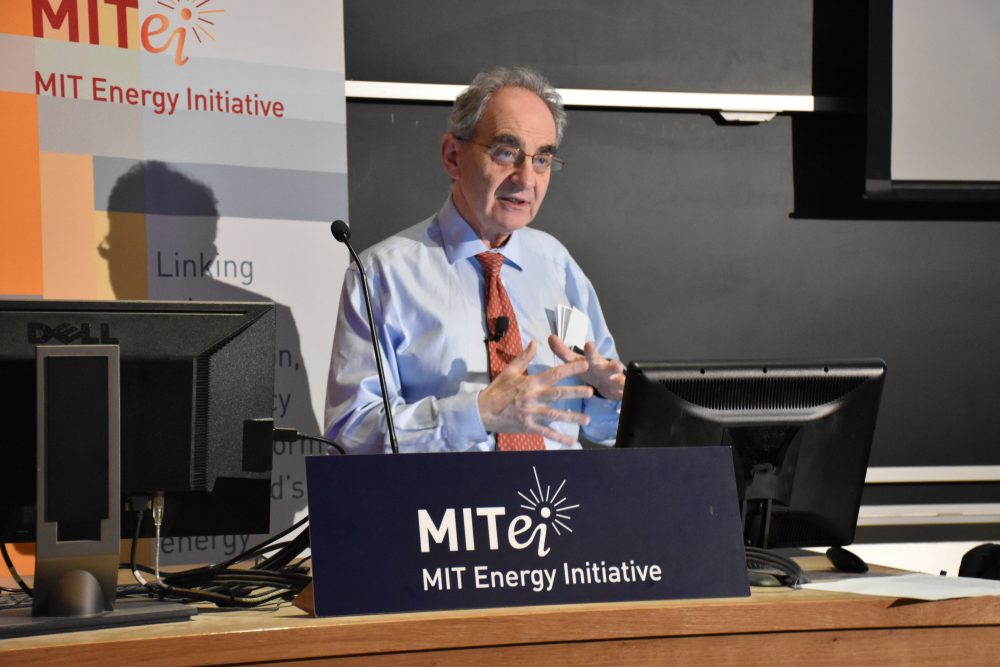
Eli Yablonovitch, director of the NSF Center for Energy Efficient Electronics Science (E3S) at the University of California, Berkeley, is a solar expert. He introduced the 4(n squared) (“Yablonovitch Limit”) light-trapping factor that is used for almost all commercial solar panels worldwide, and his mantra that “a great solar cell also needs to be a great LED” is the basis for the world record solar cells. Yablonovitch spoke with the MIT Energy Initiative (MITEI) about his thoughts on LEDs, the economics affecting solar markets, and the future of solar technology following his MITEI seminar.
Q: You have said that a great solar cell needs to be a great LED. What is the connection between the two?
A: For a solar cell to be very efficient at converting sunlight to electricity, it must also be very efficient at the reverse process, converting electricity to light, as in an LED. The solar cell and the LED are both the same device, like a motor versus a generator. Pursuing this philosophy, all solar records have been broken in the past 5 years. The principle was to optimize the solar cell as if it were an LED.
Q: You’ve mentioned that the current oversupply we’re experiencing in solar energy isn’t due to technology, but to psychology and economics. Can you elaborate on that?
A: In a price war, nobody wants to give up market share, and all retain a hope of driving their competitors out of business even as they lose more and more money themselves. In China, where the companies are backed by their local Provincial governments, who will be the first to blink? The price drops below any rational technological consideration.
Q: What are some of the new application markets you suggest we branch out into in order to justify this additional production capacity?
A: The biggest problem is that the future electric utility market is destined to be saturated by inexpensive Chinese solar panels, but unfortunately making only a modest ~10% contribution to annualized electric energy. Further solar penetration will depend on methods of seasonal storage.
If we can reduce the real price to about $0.15/Watt for a high efficiency solar panel, then there is implicit seasonal storage in reverse osmosis, since irrigation water is usually stored for years to offset dry seasons. Solar cell pumped reverse osmosis could have a huge effect on the geography of the world, literally turning the deserts green.
Another application becomes fuel generation by electrolysis, since fuels—even hydrogen—can be stored. But there are likely to be additional storable liquid fuels produced by solar electricity as well. The research problem is that we need to reduce the capital cost of the electrolyzers.
Press inquiries: miteimedia@mit.edu